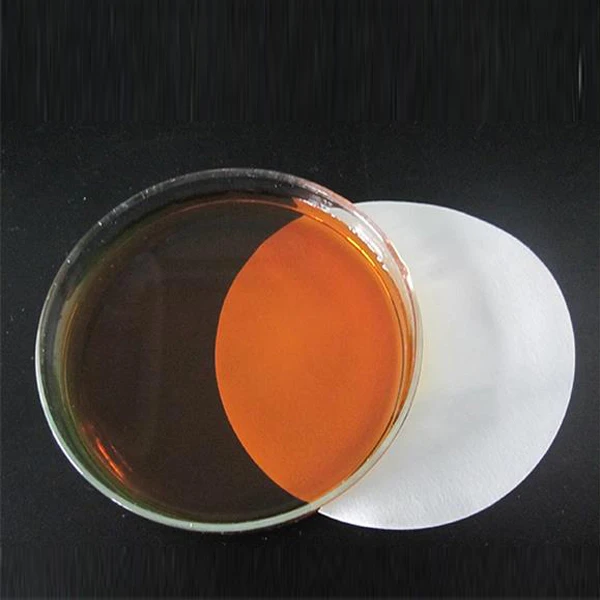
News
Th10 . 06, 2024 07:15 Back to list
high quality polyglutamic acid solubility
Exploring the Solubility of High-Quality Polyglutamic Acid
Polyglutamic acid (PGA) is a naturally occurring biopolymer derived from the fermentation of certain strains of bacteria, notably *Bacillus subtilis*. It is an anionic polymer composed of repeated glutamic acid units, and it has garnered significant attention in various fields, including food technology, pharmaceuticals, cosmetics, and agriculture, primarily due to its exceptional properties. One of the most important characteristics of polyglutamic acid is its solubility, which plays a crucial role in determining its applicability in different industries.
The Importance of Solubility
Solubility is a measure of how well a substance dissolves in a solvent, forming a homogeneous solution. For high-quality polyglutamic acid, solubility directly influences its functionality and effectiveness in applications. High solubility in water enables the polymer to be more versatile in formulations, enhancing its utility as a thickening agent, emulsifier, or stabilizer. For example, in food science, polyglutamic acid can improve the texture and shelf life of products by retaining moisture, and in cosmetics, it acts as a humectant, drawing moisture to the skin.
Factors Influencing Solubility
The solubility of polyglutamic acid can be affected by several factors, including its molecular weight, the pH of the solution, ionic strength, and temperature.
1. Molecular Weight PGA can vary in molecular weight depending on the fermentation process. Lower molecular weight polyglutamic acids tend to be more soluble, while higher molecular weight variants may exhibit reduced solubility. This characteristic makes it imperative for manufacturers to control fermentation conditions carefully to produce polyglutamic acid with desirable solubility properties.
2. pH Levels The solubility of polyglutamic acid is also highly dependent on pH. At lower pH levels, the carboxylic acid groups in the glutamic acid residues become protonated, which can lead to decreased solubility. In contrast, as the pH increases, these groups become deprotonated, enhancing solubility due to increased electrostatic repulsion between the negatively charged polymer chains.
3. Ionic Strength The presence of salts in solution can impact the solubility of polyglutamic acid. High ionic strength can screen the charges on the polymer backbone, reducing the electrostatic repulsion and leading to decreased solubility. Conversely, low ionic strength solutions tend to promote better solubility of PGA.
high quality polyglutamic acid solubility

4. Temperature Generally, increasing the temperature will enhance the solubility of most polymers, including polyglutamic acid, as higher temperatures provide the necessary energy for solvation processes. However, the specific interaction between temperature and solubility can depend on the characteristics of the solution and the polymer.
Applications Based on Solubility
Due to its outstanding solubility profile and biocompatibility, high-quality polyglutamic acid is used across various sectors.
- Cosmetics In skincare, its moisture-retaining properties help in formulating effective moisturizers and serums. It is often included in products designed for dry or aging skin, where maintaining hydration is key.
- Food Industry PGA is utilized as a food additive to improve texture and moisture retention. It acts as a thickener and stabilizer in sauces, dressings, and dairy products.
- Agriculture In agricultural applications, polyglutamic acid is used as a soil conditioner. Its ability to retain water enhances soil quality, promoting better plant growth by improving water availability.
- Pharmaceuticals In medicine, its biocompatibility allows for the controlled release of drugs and improved formulation of injectable products.
Conclusion
High-quality polyglutamic acid stands out as an essential substitute in various industries due to its remarkable solubility characteristics. By understanding the factors affecting its solubility and leveraging these properties, researchers and manufacturers can innovate new applications that capitalize on the unique benefits offered by this biopolymer. As research continues to unfold, it is likely that the role of polyglutamic acid will expand even further, paving the way for advancements in diverse sectors.
-
OEM Chelating Agent Preservative Supplier & Manufacturer High-Quality Customized Solutions
NewsJul.08,2025
-
OEM Potassium Chelating Agent Manufacturer - Custom Potassium Oxalate & Citrate Solutions
NewsJul.08,2025
-
OEM Pentasodium DTPA Chelating Agent Supplier & Manufacturer High Purity & Cost-Effective Solutions
NewsJul.08,2025
-
High-Efficiency Chelated Trace Elements Fertilizer Bulk Supplier & Manufacturer Quotes
NewsJul.07,2025
-
High Quality K Formation for a Chelating Agent – Reliable Manufacturer & Supplier
NewsJul.07,2025
-
Best Chelated Iron Supplement for Plants Reliable Chelated Iron Fertilizer Supplier & Price
NewsJul.06,2025
